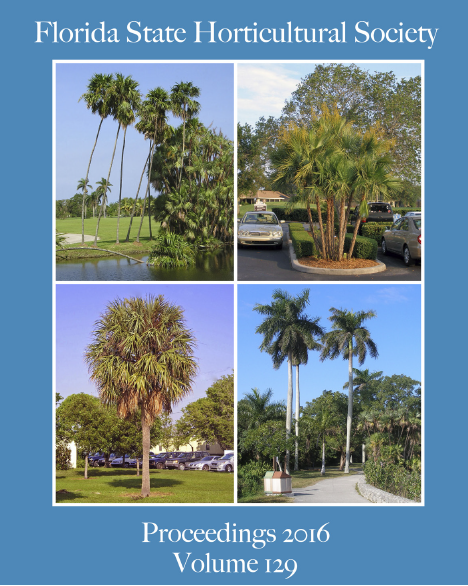Abstract
Citrus greening or Huanglongbing (HLB) is a destructive citrus disease with no effective treatment that annually costs the state of Florida one billion dollars in lost output and over 8000 jobs. The HLB pathogen Candidatus Liberibacter asiaticus grows in the phloem of citrus trees and reduces the function of the plant vascular system. Starch accumulation in infected citrus leaves an early HLB symptom, which may often be confused with a deficiency of certain nutrients such as zinc or magnesium. In this study, a vision-based sensing system was developed using a polarized imaging methodology to identify HLB symptoms on citrus seedling leaves and to determine the level of infection. Citrus seed-lings were exposed to Asian citrus psyllid (Diaphorina citri Kuwayama) that is the etiologic agent of HLB. Images of seedlings that were exposed to infected psyllids were acquired using the polarized light system at two time points after exposure: the first at one month and the second at three months post-exposure. The leaf samples were examined by a quantitative PCR test to confirm their existence of the HLB pathogen and to determine their level of infections. Four HLB positive subclasses designated as “questionable,” “weak,” “moderate,” and “strong positive” were defined according to the results of the quantitative PCR tests. Textural features were extracted from the images, and a pair-wise classification was conducted using a support vector machine (SVM) to assess the classification strength between each pair of subclasses. This protocol was able to identify HLB infection, and the level of infection one month after exposure to infected psyllids with average accuracies of 83.29%, and 73.83%, respectively. However, three months after the exposure, the average accuracies increased to 87.18%, and 89.93% for HLB diagnosis, and identification of the level of infection, respectively. Since propagation of clean nursery materials is critical to disease mitigation, early diagnosis of HLB-positive seedlings will be an effective strategy in citrus nursery systems.

